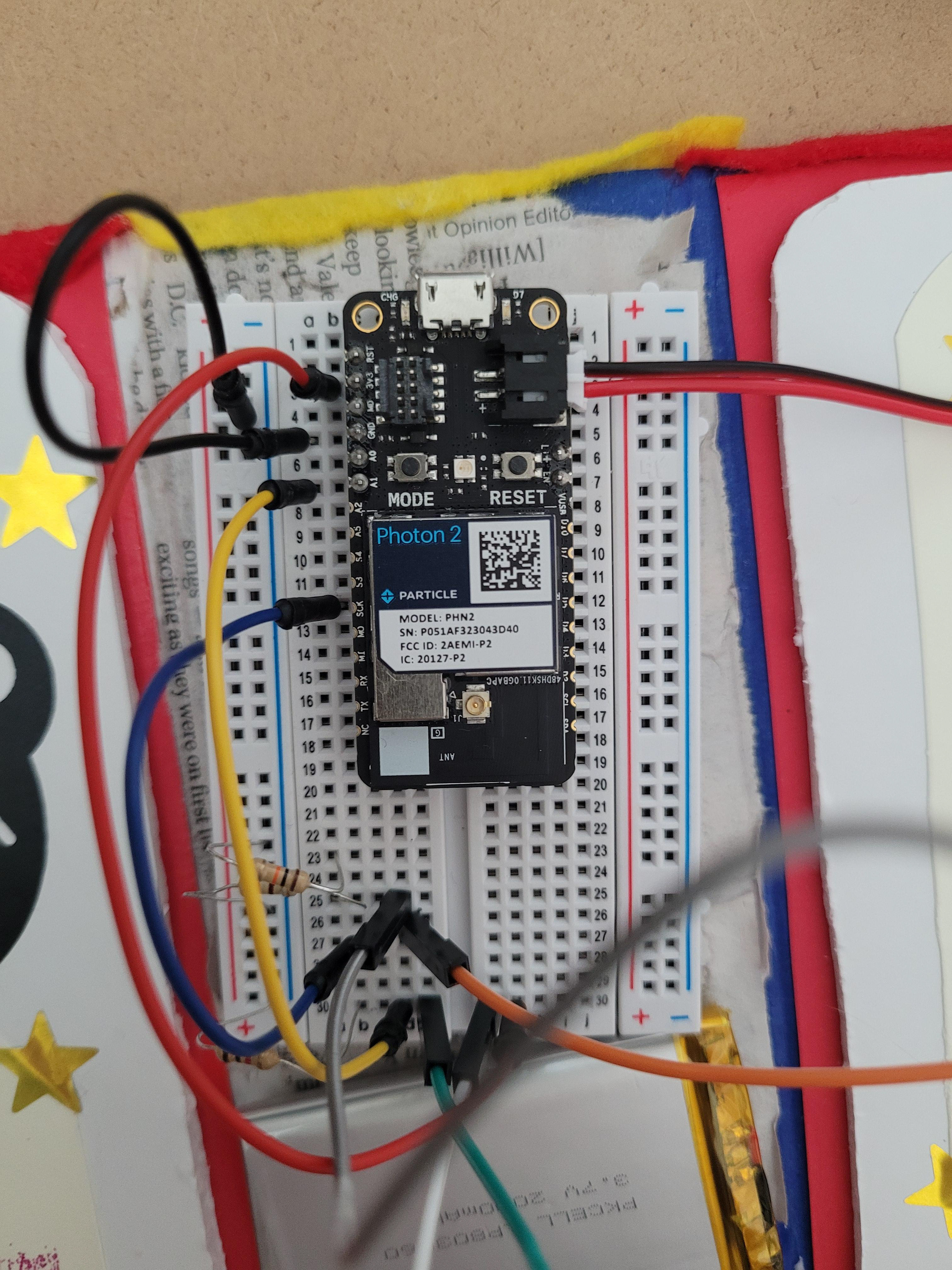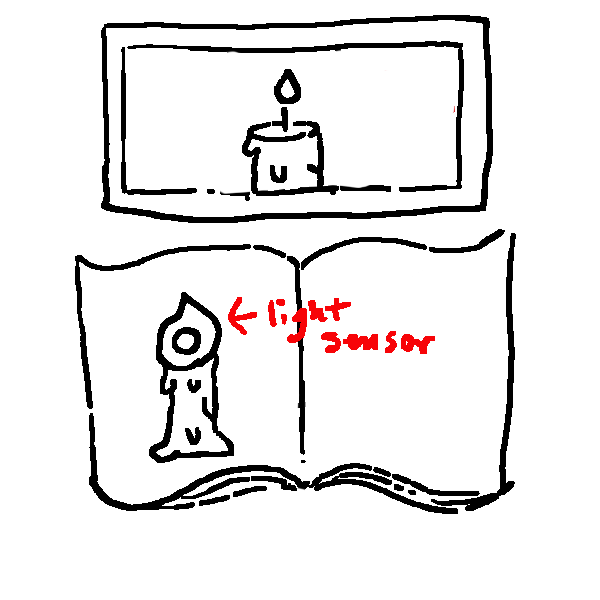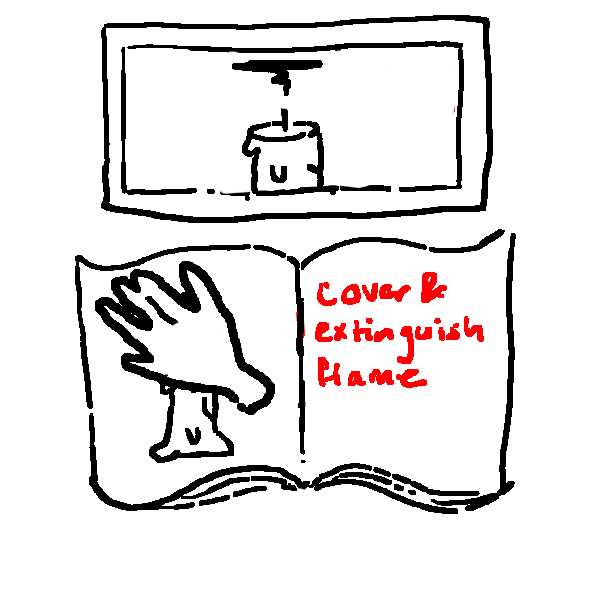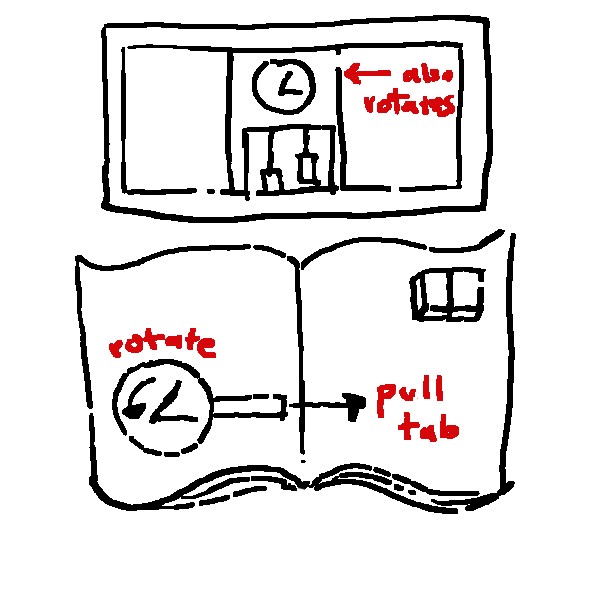This project is a work in progress.
Genre: Puzzle
Platform: Custom-made book, PC, Photon
Engine: Particle Web IDE and Processing
Team: Solo
Duration: Nov 2023 - Present.
Roles/Contribution
Game Designer: puzzle design, narrative design
Visual Designer: character art, animation
Fabricator: paper folding, gluing, soldering, wire bonding
You have stumbled upon the grimoire of a little wizard, which has mysteriously fallen into your dimension. Help the little wizard complete his final potion by solving the puzzle in the book and exchanging clues across the dimensional divide.
Showcased at:



Book is custom made out of cardboard, foam, felt, paper, and cardstock.
The game runs on a Photon microcontroller, developed in the Particle IDE. The program calls a Processing API for real-time communication between the book and the Little Wizard in the computer.
For example, if the player turns out the light on the book, the Little Wizard's room will go dark!
I animated the Little Wizard in Photoshop.
The Photon microcontroller runs on an external battery for wireless communication between the book and the computer. As long as there's Wi-Fi, the game will run!
It also contains an on/off switch to help preserve battery power. The photon sits in small compartment in the spine of the book. Wires and input pieces, such as a photoresistor (to detect light levels) are threaded through the pages.
Design Process
I wanted to build upon my fabrication skills and learn more about how microcontrollers worked. I also wanted to create an alternate controller to embed the microcontroller in. I've become very interested in papercraft and have made some short stop-motion animations using paper puppets so I wanted to explore more pop-up art crafting in combination with simple transducers (i.e., sensors/inputs). All of my materials were either free or relatively inexpensive, mostly secondhand/discarded.
Here is a short video describing my design process - you can also read more below!
I knew that I wanted to the story to be very simple and cute, so I came up with the basic premise of helping a wizard make potions using his interdimensional spellbook.
I then designed a small puzzle intentionally using simple sensors such as light detection, pressure detection, and buttons - this kept the code clean and the book itself relatively lightweight. I knew that the book would be heavily handled and that I couldn't control the environment outside of the book enough to utilize more complicated transducers like gas and distance sensors. Additionally, the book pages are frequently moved, so sensors had to be strong enough to withstand constant shifting.
I selected a few key sensors and then built the puzzle around those. I brainstormed some "wizard-y" items and uses for the different inputs, as seen in the image on the right.
Here, I considered the placement of the sensors and key steps in the puzzle on the actual page layout. The pages had to be both functional and aesthetically pleasing in a way that did not distract from the game and did not make each step obvious.
I started thinking about the specific motions and interactions that the player will have to make with the sensors. Each sensor interaction has an equivalent physical output (i.e., opening the envelope to find the physical key to the clock) or digital output (i.e., blowing out the candle flames turn off the light's in the wizard's room).
Simultaneously, I began prototyping the Photon device and testing out each sensor to make sure that the tech and code was working properly.
I ran a few small playtests with the basic paper puzzle pieces (no tech) to receive feedback and iterate on the design.

Photon



Conclusion
Challenges: My limited experience with microcontrollers led to many technical challenges, including prototyping with a breadboard, organizing wires, and ensuring efficient wireless communication between the Photon, Particle IDE, and Processing API.
The physical book also had to be sturdy but lightweight enough for players to pick up, turn pages, and play around with safely despite embedded wires and computer parts.
Feedback: Players expressed a sense of fun and whimsy - they were especially delighted by the Little Wizard himself on the laptop screen. Even the simple act of "turning off" the lights for the wizard by covering the candle had a strong effect on players, who felt that they had a lot of impact on the wizard's world. Players were a little worried about breaking the book or pulling out wires - more soldering and a sturdier prototype would help this.
Future Work: I'd love to finish the entire puzzle and record additional playtests to see if the mechanics themselves are equal parts challenging and fun. Although my prototype is purely for entertainment, there is the potential for this concept to be used in youth education - for example, toddlers and young children experimenting with tactile skills, item identification, and logical thought.
It would also be fun to experiment with a book that either has a screen embedded into the book itself or that removes the screen entirely - how can the wizard communicate and give outputs through the book alone, without visual aids on a screen? These thoughts are influencing my future iterations.
